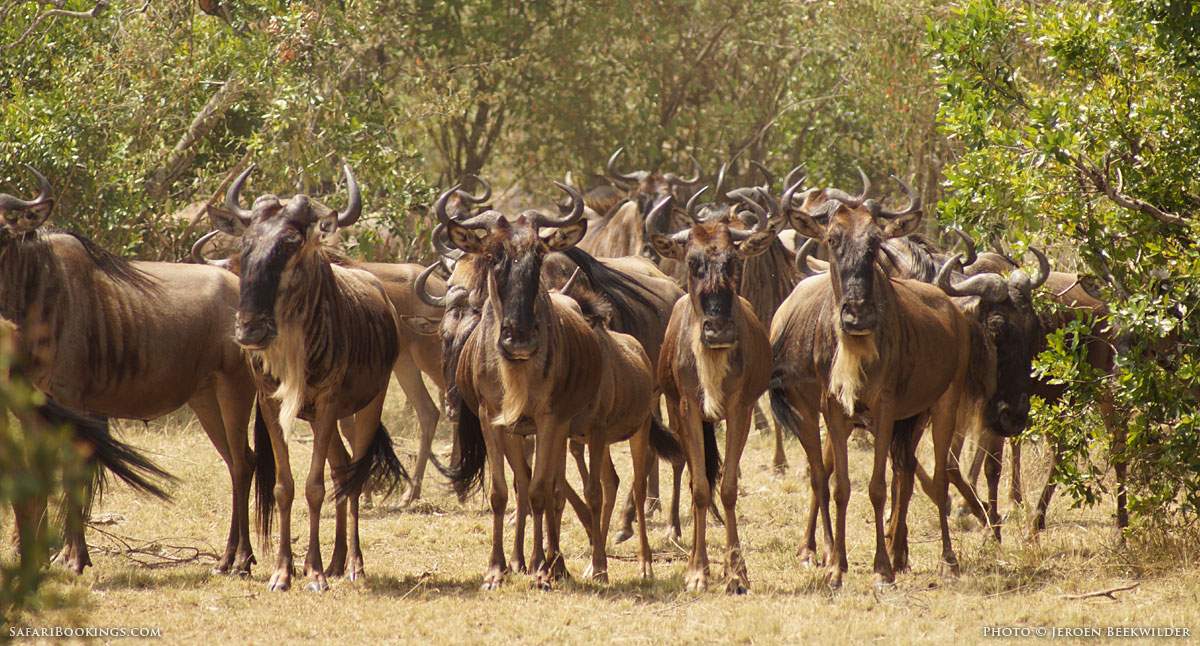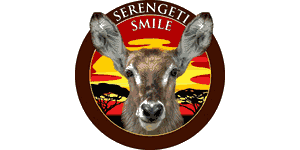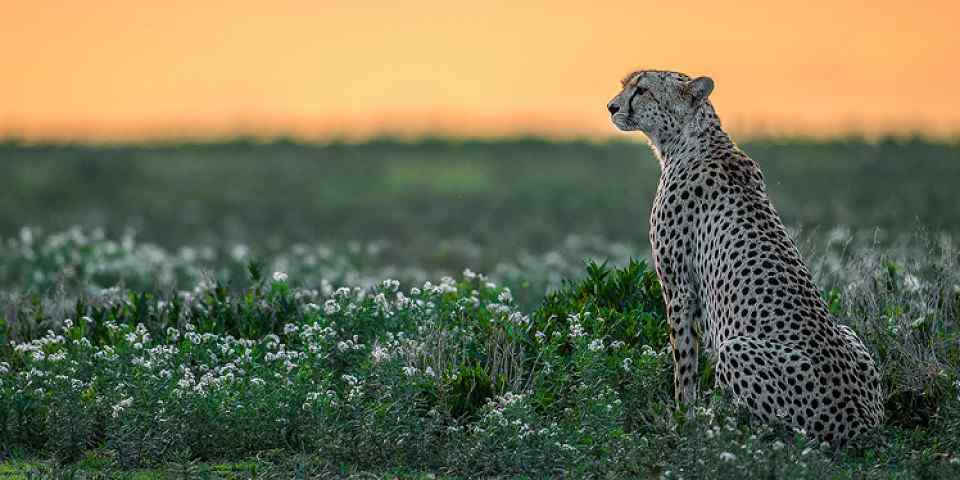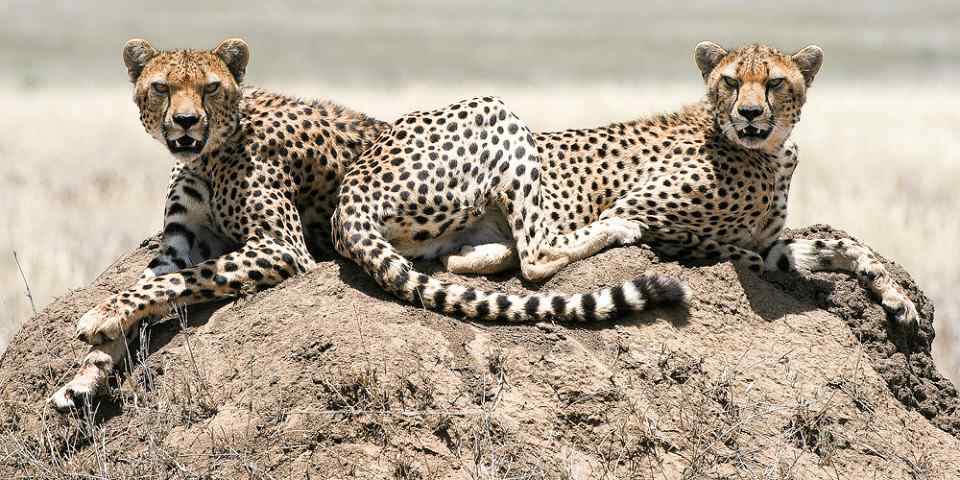
5 Fascinating Facts About the Blue Wildebeest
 By
Mike Unwin
By
Mike Unwin
Mike is an award-winning wildlife writer, former editor of Travel Zambia magazine and author of the Bradt Guide to Southern African Wildlife.
The Blue Wildebeest, a grazing herd animal has achieved fame as the key player in the Serengeti’s ‘Great Migration’, which is routinely described as the greatest animal show on earth. With its front-heavy profile, dark colouration and cow-like horns, the safari first-timer can be forgiven for confusing it with the much larger buffalo.
However, the wildebeest is an antelope. It belongs in the Alcelaphinae subfamily, with the likes of hartebeest, topi and blesbok. Here are five interesting facts about the blue wildebeest.
- The blue wildebeest occurs in five distinct subspecies, each subtly different in size and colouration. The western white-bearded wildebeest (C. t. mearnsi) of the Serengeti has a white beard, for instance, while the beard of the larger common wildebeest (C. t. taurinus), found in southern Africa, is black.
- Around 80–90 percent of blue wildebeest calves are born within a synchronized two-to three-week birthing window, usually at the start of the rains when there is plenty of fresh growth to enable females to produce milk. The sheer numbers overwhelm predators, which can make little impact on the overall wildebeest population.
- Not all wildebeest migrate. Some form small resident herds, usually comprising up to ten females and their offspring, which remain in the same area year-round. The females in these herds tend to establish dominance hierarchies and drive away any outsiders who attempt to join.
- Blue wildebeests avoid competition with the plains zebra that often graze alongside them by eating different parts of the grass. While zebra prefer the longer grasses, using their tougher digestive systems and shearing front teeth to process this coarser diet, wildebeest prefer the shorter grasses down low, where their broader muzzle allows them to maximise their grazing efficiency.
- Some 50,000 blue wildebeest perished in Botswana’s Kalahari during the mid-1980s drought, when their migration routes were blocked by veterinary cordon fences.
Want To Go on an African Safari?
Click on the button below to compare African safaris offered by top-rated tour operators.
 By
Mike Unwin
By
Mike Unwin
Mike is an award-winning wildlife writer, former editor of Travel Zambia magazine and author of the Bradt Guide to Southern African Wildlife.
More About This AuthorAfrican Safari Tours
-
![6-Day Amazing Wildlife and Cultural Experience Tour]()
6-Day Amazing Wildlife and Cultural Experience Tour
$2,181 to $2,333 pp (USD)
Tanzania: Private tour
Mid-range Tented CampYou Visit: Arusha (Start), Tarangire NP, Serengeti NP, Ngorongoro Crater, Lake Eyasi, Lake Manyara NP, Arusha (End)

Serengeti Smile
5.0/5 – 918 Reviews
-
![9-Day Budget Safari with Walking & Kilimanjaro]()
9-Day Budget Safari with Walking & Kilimanjaro
$2,420 pp (USD)
Tanzania: Private tourBudgetCamping & Hotel
You Visit: Arusha (Start), Arusha NP, Tarangire NP, Mto wa Mbu (Town), Central Serengeti NP, Serengeti NP, Ngorongoro Highlands, Ngorongoro Crater, Mt Kilimanjaro, Arusha (End)

Serengeti Wakanda Tours and Safaris
5.0/5 – 778 Reviews
-
![8-Day Mid-Range Serengeti Migration Safari]()
8-Day Mid-Range Serengeti Migration Safari
$3,150 to $3,585 pp (USD)
Tanzania: Private tour
Mid-range Lodge & Tented CampYou Visit: Arusha (Start), Lake Manyara NP, Serengeti NP, Ngorongoro Highlands, Ngorongoro Crater, Tarangire NP, Arusha (End)

Lion King Adventures
5.0/5 – 1,350 Reviews



 Subscribe to our newsletter
Subscribe to our newsletter
 Follow us on Instagram
Follow us on Instagram





